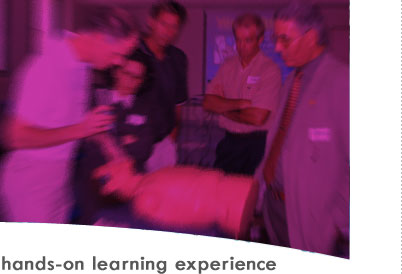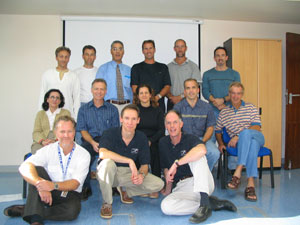

|
Introduction The Airway Interventions & Management Education (AIME) program is designed for acute care health professionals. Airway management is an ‘advance’ procedure which involves much more than the simple placement of an endotracheal tube. Decisions of when and why to intubate, by which method, with or without pharmacologic adjuncts, and what to do if things go wrong must be made quickly and confidently. This program is dedicated to supporting clinicians in making these critical airway decisions. The AIME program is case-based and uses quality patient simulator manikins (LaerdalR/MPLR) for a ‘bedside’ hands-on learning experience. Educational Objectives At the end of this program, the participant can expect to: 1. Be more confident and comfortable in making acute care airway management 2. Have acquired a practical, staged approach to airway management. 3. Be able to choose the most appropriate method of airway management based on a variety of patients’ presentations. 4. Make appropriate choices in the use of pharmacologic agents used to facilitate airway management. 5. Know when and how to use various tools and adjuncts for managing the Participants will receive their workbook and precourse material by mail in advance of the program. In order to maximize the hands-on bedside experience, participants are encouraged to have read the workbook prior to attendance. Study Credits This activity has been approved by the college of Family Physicians of Canada for 8 MAINPRO-C credits. This educational event is approved as a Best Practice Course by the Royal College of Physicians and Surgeons of Canada. Participants may claim up to 28 credits under sections 1, 4, 5 of the Maintenance of Certification Program. The MAINPRO-C and Best Practice Course credits may be claimed for completing the self-assessment activities included in the follow-up materials.
|
 |
 |
||||
|
||||
|
